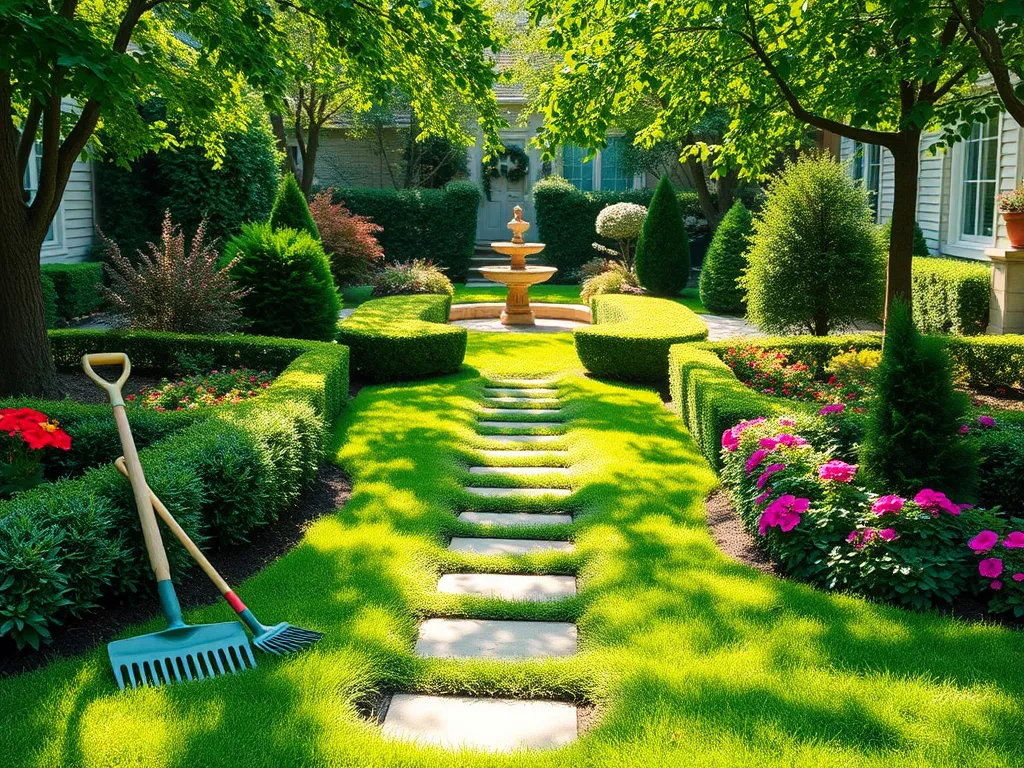Ultimate Guide: How to Care for Your Lawn Effectively

The Ultimate Guide to Lawn Care
Lawn Care plays a vital role in maintaining the aesthetic appeal and health of your outdoor space. A well-maintained lawn not only enhances the beauty of your home but also provides a comfortable area for recreational activities. Proper Lawn Care involves various practices including watering, mowing, fertilizing, weed control, and aeration.
Learn how to care for lawn with these expert tips.
A comprehensive Lawn Care routine is essential for ensuring that your grass thrives throughout the seasons. By understanding the specific needs of your lawn and implementing effective strategies, you can create a lush, green environment. This guide offers valuable insights into the fundamental practices of Lawn Care, allowing homeowners and gardening enthusiasts to achieve optimal results.
Different types of grass require varying care techniques, and factors such as climate, soil type, and usage can affect lawn health. Identifying the specific needs of your lawn is crucial to developing an effective Lawn Care routine. From selecting the right equipment to understanding seasonal requirements, this guide covers all aspects of excellent Lawn Care.
For top-notch lawn care advice, follow this page.
Moreover, regular maintenance practices can prevent common lawn problems such as diseases, pest infestations, and weed growth. Understanding the importance of each component of Lawn Care ensures that you’ll achieve a healthy lawn that can withstand environmental stressors. Let’s dive into the key elements of Lawn Care that will help you cultivate and maintain a stunning yard.
This article will explore essential aspects of Lawn Care, including watering techniques, mowing best practices, fertilization methods, weed control strategies, and the importance of aeration and dethatching. By adhering to these guidelines, you will promote a thriving lawn that can be enjoyed for years to come.
Lawn Watering Techniques
Deep watering is crucial for healthy lawn growth, as it encourages deep root development and allows grass to withstand drought conditions. Watering deeply but infrequently enables the soil to retain moisture, contributing to a resilient lawn.
The best time to water your lawn is early in the morning when temperatures are cooler. This minimizes evaporation and allows the grass to absorb moisture effectively. Avoid watering in the evening, as this can lead to prolonged dampness and potential diseases.
This post offers great lawn care suggestions for beginners.
Signs that your lawn needs water include color changes (such as a dull green or grayish tint), curling grass blades, and footprints that remain visible after walking on the grass. Regular observation helps you respond promptly to watering needs.
Using a sprinkler system effectively involves determining the right frequency and duration of watering. Ensure that the lawn receives about 1 to 1.5 inches of water per week, either from rainfall or irrigation, and adjust your schedule according to weather conditions.
Common mistakes to avoid in lawn watering include overwatering, which can suffocate roots and promote disease, and underwatering, which hinders growth. Always check the soil moisture before watering to ensure optimal irrigation practices.
Lawn Mowing Best Practices
The ideal grass height varies depending on the type of grass you have. For example, cool-season grasses are best kept at about 3-4 inches, while warm-season grasses should be mowed to a height of 1.5-3 inches. Maintaining the appropriate height helps promote healthy root development and reduces weed competition.
During the growing season, mow your lawn regularly. In spring and fall, this may require weekly mowing, while in summer, every 10-14 days might suffice. Always adjust your mowing schedule based on grass growth rates and environmental conditions.
Generally, you should mow your lawn when the grass is dry. This prevents clumping and ensures a clean cut. Also, never remove more than one-third of the grass height in a single mow to mitigate stress on the plants.
Employing proper mowing techniques, such as using sharp blades and alternating mowing patterns, can help prevent lawn diseases. Ensuring your mower is well maintained further enhances the overall health of your lawn.
When choosing a mower, consider the size of your lawn. For smaller yards, a push mower may suffice, while larger properties might require a riding mower. Additionally, electric mowers offer eco-friendly solutions for lawn care.
Fertilizing Your Lawn
When it comes to fertilizers, there are two primary types: organic and synthetic. Organic fertilizers improve soil health and provide slow-release nutrients, while synthetic fertilizers deliver faster results but can potentially harm the environment that is why understanding the pros and cons of each type is important.
It’s recommended to fertilize your lawn at least twice a year, once in the spring and again in the fall. Apply fertilizer evenly according to the package instructions, ideally after mowing or rainfall to facilitate absorption.
Signs of nutrient deficiency include yellowing grass, stunted growth, and poor color. Identifying these symptoms early can help you rectify the issue promptly and restore lawn health.
Different grass types benefit from specific fertilizers. For instance, a high-nitrogen fertilizer is advantageous for cool-season grasses, while warm-season grasses thrive on a fertilizer with a balanced ratio of nitrogen, phosphorus, and potassium.
Creating a fertilization schedule tailored to your lawn’s needs ensures that your grass receives the necessary nutrients at the right time. Consider soil testing to determine existing nutrient levels and tailor your schedule accordingly.
Weed Control Methods
Identifying common lawn weeds, such as dandelions and crabgrass, is essential for effective weed control. Understanding the growth patterns of these weeds can help inform your prevention and treatment strategies.
Preventative measures to stop weed growth include maintaining healthy grass through proper watering and fertilization, as well as mowing at the correct height. A thick, healthy lawn can outcompete weeds for resources and sunlight.
Both organic and chemical weed control options are available. Organic methods include manual removal and the use of natural herbicides, while chemical options offer faster results. Be sure to follow all safety guidelines when using chemical herbicides.
The best time of year for weed treatment is during the early spring when weeds are actively germinating, and again in the fall. Applying treatment during these times ensures the most effective control of unwanted plants.
To maintain a weed-free lawn, consistent monitoring and preventive practices are essential. Regularly inspect your lawn for signs of weeds and apply control measures promptly to prevent them from spreading.
Lawn Aeration and Dethatching
Lawn aeration involves perforating the soil with holes to allow air, water, and nutrients to penetrate the grass roots. This practice is essential for reducing soil compaction, promoting healthy growth, and improving overall lawn health.
The best times to aerate your lawn are during the growing seasons—early spring or fall, depending on your grass type. Aerating during these times allows your grass to recover quickly and benefit from improved soil conditions.
To dethatch your lawn, use a dethatching rake or machine to gently remove the layer of thatch, which is dead grass and organic matter that accumulates over time. Doing this promotes better water and nutrient absorption.
DIY aeration techniques, such as using a garden fork to poke holes in the soil, can be sufficient for small lawns. However, for larger areas, consider hiring professional services for thorough aeration and dethatching.
The benefits of lawn aeration on grass growth include improved root development, better resilience against drought, and enhanced effectiveness of fertilizers. By aerating, you help ensure a lush, vibrant lawn that will be the envy of the neighborhood.
